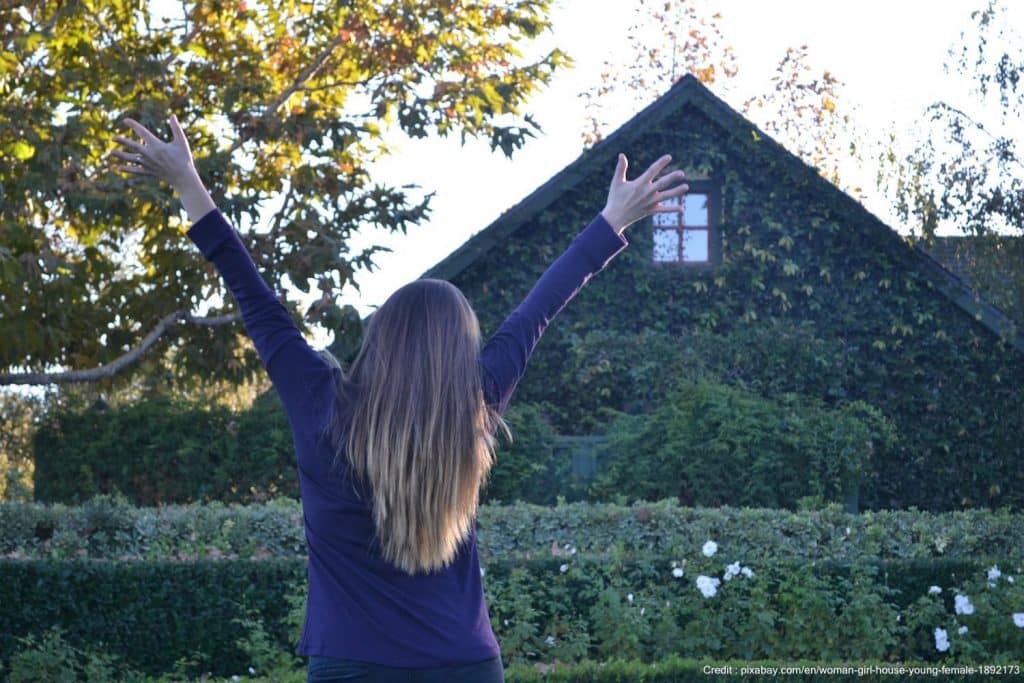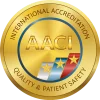Addiction is a very challenging opponent to overcome. Part of the difficulty in defeating it is our own over-confidence; as soon as we start to underestimate the force of our addiction, it overtakes us yet again. This over-confidence leads many people to conclude that they do not need addiction treatment at all – believing that they could stop their behaviour anytime they wanted to.
But successfully breaking free from substance abuse takes a true commitment of time and effort, even after formal treatment has ended. For this reason, many patients choose to stay in a sober living facility before fully re-entering society.
What is a Sober Living House?
A halfway house or sober living house is a controlled environment shared with other recovering addicts. It helps patients who are struggling to stay clean, but it exists outside the walls of an addiction centre.
Residents can come and go as they please, but their behaviour is regularly monitored, drugs and alcohol are strictly forbidden, and personal support is given on a semi-regular basis
As a stepping stone towards the freedom of the outside world, a sober living facility achieves just the right balance of supervision and independence.
Types of Sober Living Environments
Although sober living facilities and halfway houses share numerous common features, they are not exactly the same. In general, we can distinguish between three types of sober living environments – halfway houses, sober living homes, and rehab centres.
Halfway Houses
A halfway house is a transitional sober living environment. Such facilities aren’t rehabs, providing support and care for recovering addicts but without ongoing addiction treatment.
The goal of a halfway home is to provide a safe, supportive, and structured environment for recovering addicts to continue their road to recovery.
What’s important to note is that such facilities usually have a 12-month residency limit. They are also public, offering less privacy than privately owned facilities.
Sober Living Homes
Unlike halfway homes, sober living homes are privately owned facilities. They are usually run by religious groups, businesses, or private individuals.
Because of that, sober living homes, or recovery homes, offer more privacy as they are set in quiet residential areas, unlike halfway homes that typically offer a dorm-like setting.
Another difference is that recovery homes aren’t as strict as halfway houses, with residents being able to come and go as they please. They also don’t require a resident to undergo addiction treatment prior to their stay.
The primary goal, however, remains the same: provide recovering addicts with a safe and supportive environment.
Rehab Centres
Rehab centres, such as our very own The Dawn, provide addicts with a much more comprehensive support system. First and foremost, such facilities include active treatment programs, starting from detoxification and ending with post-treatment support.
They also include various types of rehabilitation methods. For example, at The Dawn Rehab, patients undergo personalised treatment programs that involve a combination of medically-based therapy support and holistic wellness treatment.
Long story short, while halfway houses and sober living homes focus on providing aid to recovering addicts, rehab centres offer all-around support in treating addiction and recovering from it.
The Challenge of Staying Sober
It can be somewhat scary to come from the controlled environment of rehab back to the real world, where the same triggers and environment you have escaped from now surround you once again. Furthermore, taking on and accepting a brand-new identity – that of a recovering addict – can be difficult, even under ideal conditions, without the additional peer pressure that helped bring about your addiction in the first place.
Passing by bars and pharmacies on a regular basis while dealing with the stresses of the world and feeling that you have nobody to talk to who can understand what you’re going through – these can be trying times.
In addition, the difficulty of facing up to past misdeeds and apologising to friends, co-workers and loved ones for previous mistakes can be even harder to bear. For many, this pressure is enough to derail their effort to stay clean or at least make it much more challenging than it needs to be.
The hurry to return to ‘normal life’ should be kept in check until you are completely ready for the trials ahead. In many cases, the best way to get ready is to share your early recovery period with others who are making the same effort.
Finding Support Groups
In a sober living house, all of the positive influences around you combine to form a single message: stay clean. It is a real challenge for people to change their personal habits even under normal conditions, especially if those habits have been reinforced through months or years of compulsive behaviour. A structured, sober environment makes adjustment to ordinary life a much easier prospect, particularly for long-time users.
Residents learn to take care of themselves in their new lifestyle, one step at a time. They also receive support and advice from others who are going through the same challenges – as well as therapists and addiction experts who can teach additional skills for staying healthy and operating independently out in the world. Like a set of training wheels on a bicycle, a sober living house represents an excellent safety feature for those who have taken a bad fall.
Addiction recovery requires putting into practice the teachings and methods introduced in treatment centres. It is an excellent opportunity for residents to test out their newly acquired skills whilst under supervision. This process, in turn, allows residents to develop a healthy amount of self-confidence in preparation for their eventual return to modern society.
Moreover, formal support groups are commonly found nearby, such as Alcoholics Anonymous and Narcotics Anonymous meetings. Attendees can build real connections that further reinforce a commitment to healthy living through refined and effective 12-step programmes for recovery.
Through each of these support mechanisms, recovering addicts – particularly those who have struggled with addiction for a long time – will receive the support they need to make their recovery a successful one.
How to Choose the Right Sober Living Facility or Halfway House
When trying to choose the right halfway house, there are many things to consider. But what should you look for when trying to decide which halfway house to attend? Here are some of the things you should look for.
Research the Available Halfway Houses and Sober Living Facilities
The first step to finding the right sober living facility is to research the available options. There are two things you should look into:
- Accreditation and Licensing – Consider the different legal requirements that halfway houses and sober living facilities need to follow. At the very least, a good halfway house or sober living facility should have the appropriate national certifications and licenses.
- Reviews and Testimonials – The best halfway houses and sober living facilities will have a range of positive reviews and testimonials left behind by satisfied clients. When looking for a good facility, it’s always worth looking into the reviews left by past clients.
When it comes to the selection of the correct facility, you also need to consider your personal requirements. When looking for an appropriate facility, it should be tailored to your personal needs, so consider the following:
- Does the halfway house offer any specialised programs dealing with your particular addiction? If so, that could make that halfway house a better choice for you. Generalised halfway houses often offer only generalised programs, so they might not be the best choice for you.
- Does the halfway house offer any dual diagnosis programs? If you have a dual addiction, like alcohol and meth, then you may require a unique program that can deal with such a situation. In these cases, you should look for a halfway house that offers these kinds of programs.
Benefits of Sober Living Facilities
So, what are the benefits of attending a halfway house? Let’s take a closer look at the different advantages offered by attending this kind of facility.
- It offers an organized environment to those needing a structured reintroduction to society. Strict structures and rules can make it easier for people to adapt in the initial stages of recovery.
- It offers a sense of accountability. In a halfway house, residents are held accountable for their actions. These facilities institute regular drug testing, curfews, and other house rules to ensure that individuals take responsibility for their own sobriety.
- Sober living facilities ensure that recovering addicts have the support of other people who are facing the same challenges and have similar goals.
- A halfway house or sober living house offers individuals transitioning from rehab, in-patient treatments, or other intensive programs a crucial intermediate step. It helps them get the transitional support they need to reestablish themselves in society.
- Relapse prevention – Halfway houses help prevent relapses by creating a controlled and drug-free environment where patients are held accountable for their own actions.
- Another great advantage of halfway houses is that they offer excellent skill development programs. These include life skills training, as well as employment and educational support networks to help patients get the education and jobs that they need.
- Building a sober social network – The final advantage of a halfway house is that it offers positive peer influence and shared social experiences with people who understand what you’re going through.
Common Concerns about Halfway Houses and Sober Living Facilities
When you mention the word halfway house, many people have an immediate list of concerns and misconceptions. The reality of the matter is that these facilities have a lot to offer. Let’s address some of the most common concerns and misconceptions around this type of facility.
- Stigmatisation – One of the most common concerns people have had about attending halfway houses is that there is such a stigma surrounding them. Of course, in modern times, the stigma about getting treated for addiction is considerably less. The important thing is to ensure that people understand what a halfway house is and how it helps.
- Cost and Accessibility – Another common concern about halfway houses is that they may be quite expensive, especially if you wish to attend a private facility. However, many sober living facilities receive subsidisation. In some cases, there are also other payment options you can make use of.
- Accessibility and Location – The final of the three major concerns about halfway houses is that they may be inaccessible to the general public.
- One of the reasons it may be so is that there may not be a halfway house in the immediate vicinity (that said, international treatment centres have their advantages)
- The other reason is that some facilities may have too little space for the people requiring help. Overcrowding is a serious problem with many sober living facilities.
What are the Requirements for Getting Into a Halfway House?
Most halfway houses and sober living facilities have a list of requirements that potential patients need to meet before they can get in. Some of the most common requirements include the following:
- Completion of a primary care program – To get into a halfway house, you need to have completed a primary care program at an in-patient facility or another type of intensive program.
- Being Committed to Sobriety – Before you get accepted into a halfway house, you typically need to prove that you’re genuinely committed to your sobriety. This may involve a period of abstinence from substance use and/or a willingness to engage in the recovery process.
- Agreement to Random Drug/Alcohol Testing – Most halfway houses require that patients submit themselves to regular drug or alcohol testing.
- References – When you’re applying to enter a halfway house or sober living facility, they will generally require references or recommendations from those who know you and can vouch for your willingness to become sober.
- Interviews or Assessments – Most halfway houses have an interview process that you need to go through before you can get into the facility. If you fail the assessment or the interview process, you can’t get into the facility.
- Ability to Pay – While some halfway houses or sober living facilities are subsidised, most will require some sort of payment. An inability to pay the requisite fees may also keep you from entering the facility.
How Long Do Residents Stay at Sober Living Facilities?
The average length of stay in a halfway house or sober living home typically ranges from 3 to 12 months. Furthermore, as covered, halfway houses have a 12-month residential limit, meaning that it’s impossible to stay in such a facility for longer. Private facilities usually don’t impose such limits.
As for answering the question of how long you should stay in a sober living facility, this depends on your individual circumstances and the severity of your addiction. Think about the pros and cons of staying in such facilities and whether or not you’re ready to come home.
How Does a Day in a Sober Living Home Look Like?
How your day in a sober living facility looks will mostly depend on the sober home you choose to live in. When undergoing The Dawn’s step-down program, for example, your daily routine will most likely involve:
- Daily meals onsite;
- Daily morning process and support groups;
- Weekly individual counselling sessions;
- Access to on-site facilities, such as a gym, swimming pool, or yoga studio;
- Access to on-site medical care;
- Daily shuttle service for excursions to the nearest town (which is something heavily encouraged).
Better Care for Better Outcomes
All of these carefully planned features would suggest that addicts who join a sober living house are more likely to avoid relapses – and studies show that this is indeed the case. One such study looked in detail at residents who stayed at sober living facilities, comparing their data to those who did not. Reviewing their medium-term outcomes (18 months after first entering a sober living facility), the study found significant improvements among those who stayed in a sober house.
For those residents, psychiatric evaluations showed much more positive results, while drug and alcohol addiction declined. Residents from a sober house were also less likely to be arrested in subsequent months and more likely to be employed. Overall, the 12-step addiction recovery method, as well as effective social support systems, were shown to have a highly positive effect.
The study also stressed the importance of being surrounded by peers who are not using drugs or alcohol. Maintaining sobriety is far more manageable in an atmosphere where others also abstain from the consumption of addictive substances. Most sober houses create an effective environment for recovery by actively monitoring their residents to ensure that they remain on the path to wellness and sobriety.
Conclusion
Now that you understand the basics about halfway houses and sober living facilities, you can see how essential these facilities are for helping rehabilitated addicts reintroduce themselves to society.
From helping people establish a stable life with good routines to providing the support they need to help them establish a life, halfway houses provide essential services. To find out more about our in-patient treatment programme, contact us.
As the leading rehabilitation facility in Thailand, The Dawn Rehab has become the #1 choice for those seeking effective and quality care. Discover our unique treatment programme and start your road to recovery today!
Related Posts
 Best Rehab in Thailand? Monastic, Budget or Holistic?
When seeking an overseas rehab centre, Thailand has become the top destination among Australians, Brits, Europeans, and Americans. Rehabs in Thailand offer addiction and mental health treatment to people from...
Best Rehab in Thailand? Monastic, Budget or Holistic?
When seeking an overseas rehab centre, Thailand has become the top destination among Australians, Brits, Europeans, and Americans. Rehabs in Thailand offer addiction and mental health treatment to people from...
 Why Aftercare Matters in Addiction Treatment
Of the various treatment methods available to addicts, from the basic care and support of loved ones at home to medical and therapeutic interventions in specialised facilities, an inpatient treatment...
Why Aftercare Matters in Addiction Treatment
Of the various treatment methods available to addicts, from the basic care and support of loved ones at home to medical and therapeutic interventions in specialised facilities, an inpatient treatment...
 The Lowdown: What Happens at an Alcohol and Drug Rehab Centre?
The destructive cycle of addiction is notoriously hard to break but it is possible. Checking in to an alcohol and drug rehab centre is a powerful first step to overcoming addiction and embarking on...
The Lowdown: What Happens at an Alcohol and Drug Rehab Centre?
The destructive cycle of addiction is notoriously hard to break but it is possible. Checking in to an alcohol and drug rehab centre is a powerful first step to overcoming addiction and embarking on...
 The Cost of Addiction Treatment in Australia
Addiction is a complex illness that affects millions of people globally, including Australians. It can have devastating effects on individuals and their families, including physical, emotional, social, and financial consequences....
The Cost of Addiction Treatment in Australia
Addiction is a complex illness that affects millions of people globally, including Australians. It can have devastating effects on individuals and their families, including physical, emotional, social, and financial consequences....





